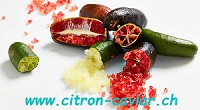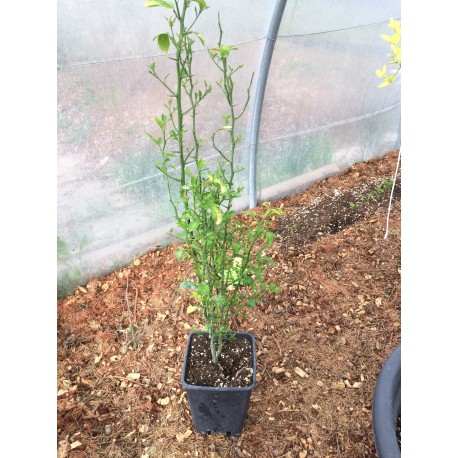No products
Prices are tax included
Microcitrus Australasica vartiety Green Alstonville
GRALSTBOUT3
New product
Microcitrus Australasica vartiety Green Alstonville (plant)
This product is no longer in stock
More info
Microcitrus Australasica - Lime Caviar - Limepearls - Finger lime - Lemon Caviar
Variety: Green Alstonville
One plant of about 80cm in a 4L pot. This plant has been taken from one of our plants imported from Australia.
Grow yourself this this highly sought species! Lemon having the shape of a big finger with a flesh resembling caviar and several different colors.
All the biggest restaurants are looking for this lemon so rare and so good! Grow it!
Plant native to Australia, its fruit is cylinder shaped with a elongated bark and different colors.
It is a vigorous plant rather resistant to cold and drought.
- Plant type: Citrus.
- Family: Rutaceae.
- Common name: lemon caviar, lemon finger Finger Lime.
- Description: Pretty thorny bush native to the undergrowth of the forests of Australia.
This Rutaceae can reach 6 / 8m in the ground.
Its fruit is cylindrical (4-8 cm long), the leaves are small. Fruit color varies green, yellow, orange, red, purple, black or brown, although from the same species (70 varieties).
He is best known for its fruit composed of small vesicles (like caviar) that can be used as a garnish or added as a condiment to many good meals! They have a lemon with a little tartness of grapefruit peel. When you bite into one, the blisters break under the tongue, it is an amazing and unique flavor. Fresh and very fragrant leaves are also used to flavor dishes and even prepare delicious drinks.
Ask our best cooks, they love them all!
- Place of culture: unheated conservatory or cold greenhouse (about 5 ° C).
Culture few times as possible in the ground in warmer regions (French Riviera or Atlantic coast for example).
Culture outside possible during the summer season.
- Minimum storage temperature: 5 ° C.
- Substrate Example use: 33% of garden soil, 33% horticultural compost, 33% coarse sand.
- Watering during the winter season: moist Soil: watering when the soil is dry about 1 cm surface.
- Watering during the summer season: Sol wet: water so that the substrate is still damp.
- Exposure: Full sun.
- Bloom: July-August
- Harvesting: December to March









